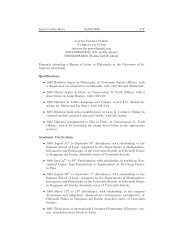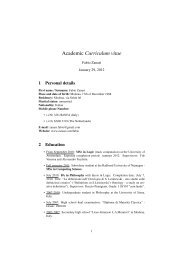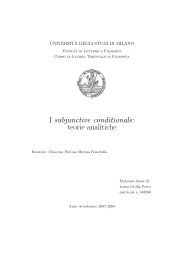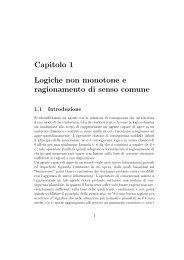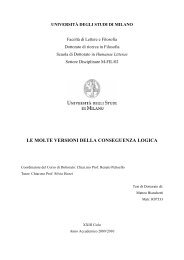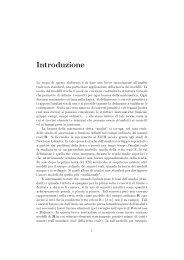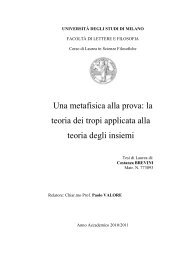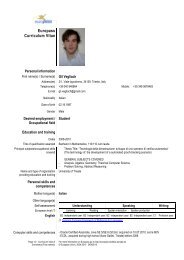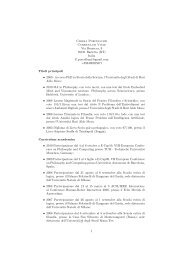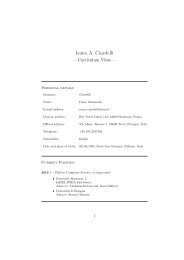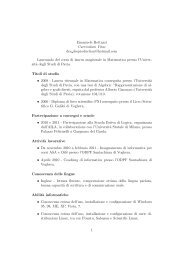Ω-Theory: Mathematics with Infinite and Infinitesimal Numbers - SELP
Ω-Theory: Mathematics with Infinite and Infinitesimal Numbers - SELP
Ω-Theory: Mathematics with Infinite and Infinitesimal Numbers - SELP
Create successful ePaper yourself
Turn your PDF publications into a flip-book with our unique Google optimized e-Paper software.
CHAPTER 1. Ω-CALCULUS<br />
Definition 1.10.4. If G has the FIP, then<br />
<br />
〈G〉 =<br />
is the filter generated by G.<br />
Y : ∃X1, . . . , Xk ∈ G so that Y ⊇<br />
The name “filter generated by G” is justified by the fact that 〈G〉 is indeed a<br />
filter, <strong>and</strong> it’s the smallest filter containing G. We won’t give the easy proof of this<br />
statement.<br />
Example 1.10.5. For all X ⊆ A, FX = {Y ⊆ A : Y ⊇ X} is a filter. The filters of<br />
the form FX <strong>with</strong> X ⊆ A are called principal filters. It’s clear that all the principal<br />
filters have the FIP.<br />
With the interpretation of Remark 1.10.2, a principal filter FX corresponds to<br />
the (principal) ideal generated by X.<br />
It’s important not to think all filters are principal. In fact there is one example<br />
of an important nonprincipal filter: the Frechet filter.<br />
Definition 1.10.6. The Frechet filter Fr(A) over a set A is the family of cofinite<br />
subsets of A:<br />
Fr(A) = {X ⊆ A : X c is finite}<br />
This filter will play an important role in the construction of models for Ω-<br />
Calculus.<br />
In analogy to the case of ideals, we can define filters that are maximal <strong>with</strong> respect<br />
to inclusion. This condition turns out to be equivalent to other two characterizations.<br />
Proposition 1.10.7. Let F be a filter over a set A. The following properties are<br />
equivalent:<br />
1. X ∈ F ⇒ X c ∈ F;<br />
2. k<br />
i=1 Xk ∈ F ⇒ ∃i : Xi ∈ F;<br />
3. F is a maximal filter on A <strong>with</strong> respect to inclusion.<br />
Proof. All the proofs are by reductio ad absurdum.<br />
To prove that condition 1 implies condition 2, suppose that condition 1 holds <strong>and</strong><br />
that k i=1 Xk ∈ F, but Xi ∈ F for all i = 1, . . . , k. Then, by hypothesis, Xc i ∈ F<br />
for all i = 1, . . . , k; <strong>and</strong> the same holds for the intersection<br />
k<br />
X c c k<br />
i =<br />
∈ F<br />
i=1<br />
i=1<br />
Since we are assuming that k<br />
i=1 Xk ∈ F, this is a contradiction: otherwise, we<br />
would deduce that ∅ ∈ F, <strong>and</strong> conclude that F is not a filter.<br />
Now, we will prove that condition 2 implies condition 3. If F was not maximal,<br />
then there would be a filter F ′ that properly includes it. Now, pick any X ∈ F ′ \ F:<br />
32<br />
Xk<br />
k<br />
i=1<br />
Xk




